Hi Guys
I’m new to Nortons and have just bought a ES2 (1956). It needs a bit of work and I was told the steering needed looking at and fork oil adding to the forks.
It needs a lot more than that but I’ve started with the forks. But I’m not entirely convinced that something isn’t missing. The reason I say that is because there is a slot machines into the top of the piece on the rhs. Why machine a slot if it doesn’t do anything?
I haven’t been able to find the same forks on you tube so I’m in the dark. What would be particularly helpful is if someone could tell me how much oil I need to add. Many thanks.
Welcome to the club Michael,…
- Log in to post comments
Long Roadholders
Michael, these are the correct "Long" Roadholders for your bike, readily identifiable by the external springs. The later "Short" Roadholders, along with much longer springs internal to the stanchions have a (slightly!) improved damper, with a long rod screwed in to the underside of the tube top nuts. Your earlier damper does not have this arrangement, just the solid tapering item you show. Memory definitely shaky on these forks, but I think there is a slot on top of your damper, just to act as a screwdriver slot. I'm sure if I am wrong, I'll be shot down in a flash!
Cheers, Mike
- Log in to post comments
From the picture supplied,…
From the picture supplied, there appears to be a very nasty score in the stanchion stretching above and below where the top of the spring is.
It is not wholly clear from the picture, but looks as though the stanchion may have cracked all the way through along part of the scoring - if it has I’d suggest a replacement as the structural integrity will be impaired.
- Log in to post comments
Well spotted Alan. The forks…
Well spotted Alan. The forks are in poor condition and I’m grateful for your comment. I hadn’t noticed the point you raised. It was just coincidence that it was shown in the photo.
Safety and reliability are my top priorities.
On closer inspection it’s just another surface battle scar.
- Log in to post comments
Long Roadholder spring cover tubes
Michael,
If you need to replace your upper spring cover tube then make sure you get the correct length, there are two lengths that I've seen i.e. 6.25" and 6.5". My 1955 ES2 needed the longer ones so that there was no gap between the top and bottom tubes.
- Log in to post comments
A bush kit from the club and…
A bush kit from the club and a new pair of stanchions are reasonably priced compared to new stuff, and probably well worth the investment. Also get yourself a good manual, I think the club sells them. I can’t remember the oil level but 1/2 pint comes to mind, but to be honest that’s a starting point. If you search on fork improvements you’ll see there are options to prevent or reduce bottoming out or topping. You an also fit the later dampers if you want to go a stage further. None of these alterations change the appearance of the forks
- Log in to post comments
Stanchions are out of stock…
Stanchions are out of stock unfortunately and I can’t find the manual for my ES2 on the spares listing. My bushes aren’t bad, but if I had replaced the stanchions I would have replaced the bushes.
At least I’ve cleaned the forks out (holes were blocked with gunge) and checked them over.
I’ll move on to the steering issues now.
Thanks once everyone for your fantastic support.
- Log in to post comments
Excellent photo
Michael, I hope that is a scratch on the fork leg at the bottom on the axle support. I needed a bit of magnification. If it is a crack, I'd get it repaired by someone with good alloy welding skill. Cracks on the other fork leg are common in the axle pinch area and need similar treatment.
Peter
- Log in to post comments
You guys have good eyesight!…
You guys have good eyesight! It is a scratch - phew! The other fork leg has had a weld repair which I’ve tidied up because it prevented access to the bottom screw.
Thanks to all your excellent and much appreciated feedback I’ve got my head around these forks now. The slot that I mentioned previously wasn’t needed when I dismantled the first leg. But on the second one I needed to use a flat strip of metal in the slot (held with mole grips) whilst removing the bottom screw.
I also found an old link on this website which said a “quarter” pint of oil in each leg. But reading the latest info I will use the recommended half pint.
- Log in to post comments
English, not USA pint. Or…
English, not USA pint.
Or is the "half pint" from USA sources? English pint = 20 fluid ounces, USA = 16 fluid ounces.
- Log in to post comments
Good point! I’ll start with…
Good point! I’ll start with a quarter pint (British) then top up gradually if necessary. No point chucking loads in only to waste it and not know if the same amount is in each side. Thanks
- Log in to post comments
EM Franks says 1/4 pint for…
EM Franks says 1/4 pint for the early Roadholders. 5 fluid ounces.
- Log in to post comments
Later damper?
Dan, you made a comment about fitting the later damper to Long Roadholders. I’ve not read of this being done, is it really a practical suggestion? Obviously either damper tube will fit into the sliders, and the hollow stanchion top nuts are easily replaced by the later solid and threaded ones used on Short Roadholders. But would the damper rod fit? After all, long Roadholders are, well, longer- the stanchions that is. I don’t have the numbers to hand, but from memory there’s at least an inch difference, so wouldn’t the damper rod be too short when fitted to Long Roadholders?
Curious to know.
- Log in to post comments
The Norton Manual copied…
The Norton Manual copied above says 1/2 pint, I think I put 200cc in mine.
The commando stanchions are 1/4 inch shorter so not much in it, I have them fitted in my ES2 trials bike, I seem to recall having to have slightly longer damper rods but I did use the commando stanchions, I think both are available from RGM. Ill see if I can find the previous thread about this
Here
https://www.nortonownersclub.org/node/1312
Dan
- Log in to post comments
Commando stanchions......
and innards can replace the early long Roadholders. They will then have real damping, internal springs, and are more durable. They only differ in length by 0.10". This was suggested by Ken McIntosh and I can testify works great on my '48 Gardengate. I found all good, used parts so it wasn't even very expensive. Undetectable. Read this from Ken:
http://www.manxnorton.co.nz/faq/;jsessionid=E0F335692EDD3034E6721DDAC9AC479F?faq_id=2
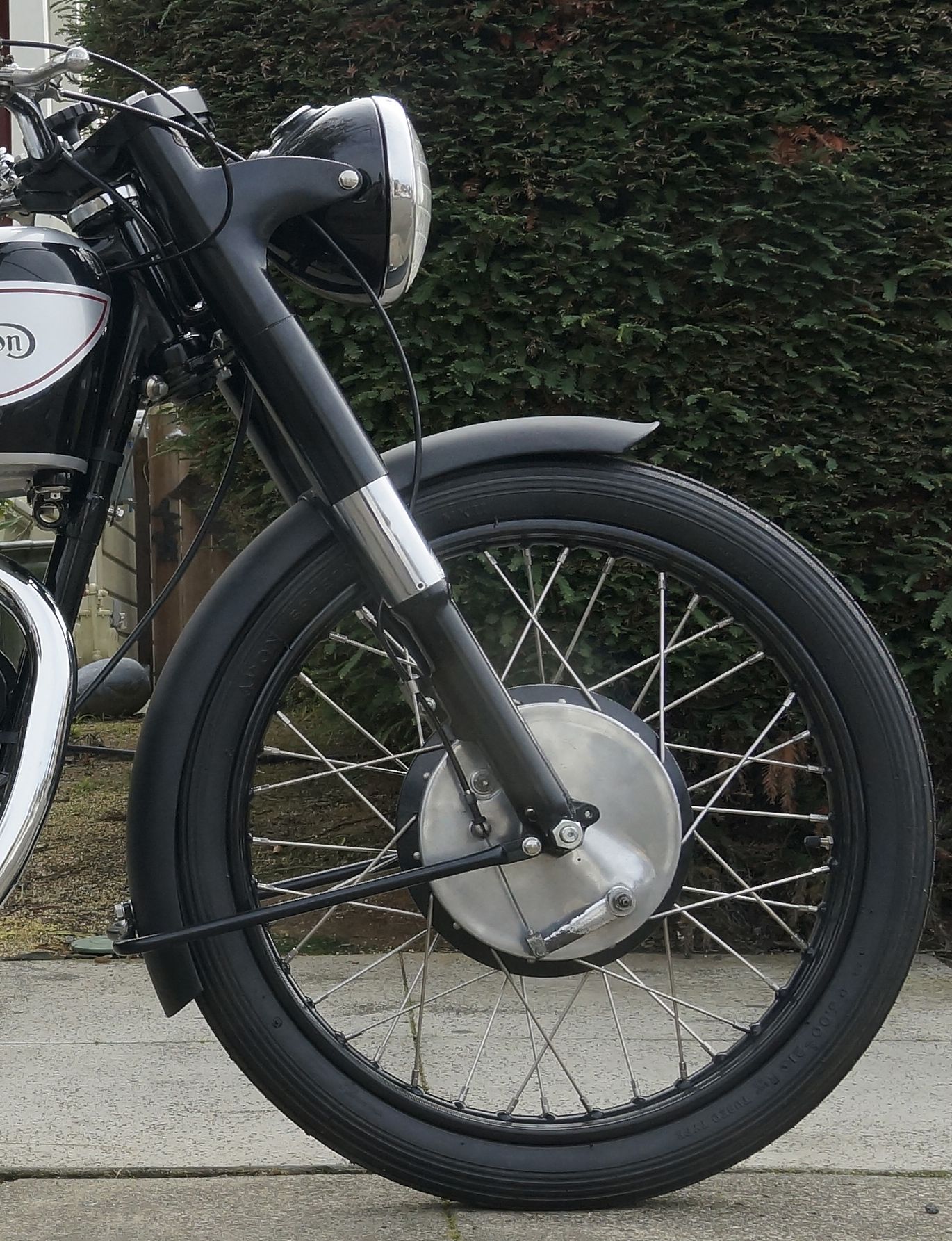
- Log in to post comments
A useful and straightforward…
A useful and straightforward mod then, pleased its worked for you guys. Thats the beauty of this forum!
- Log in to post comments

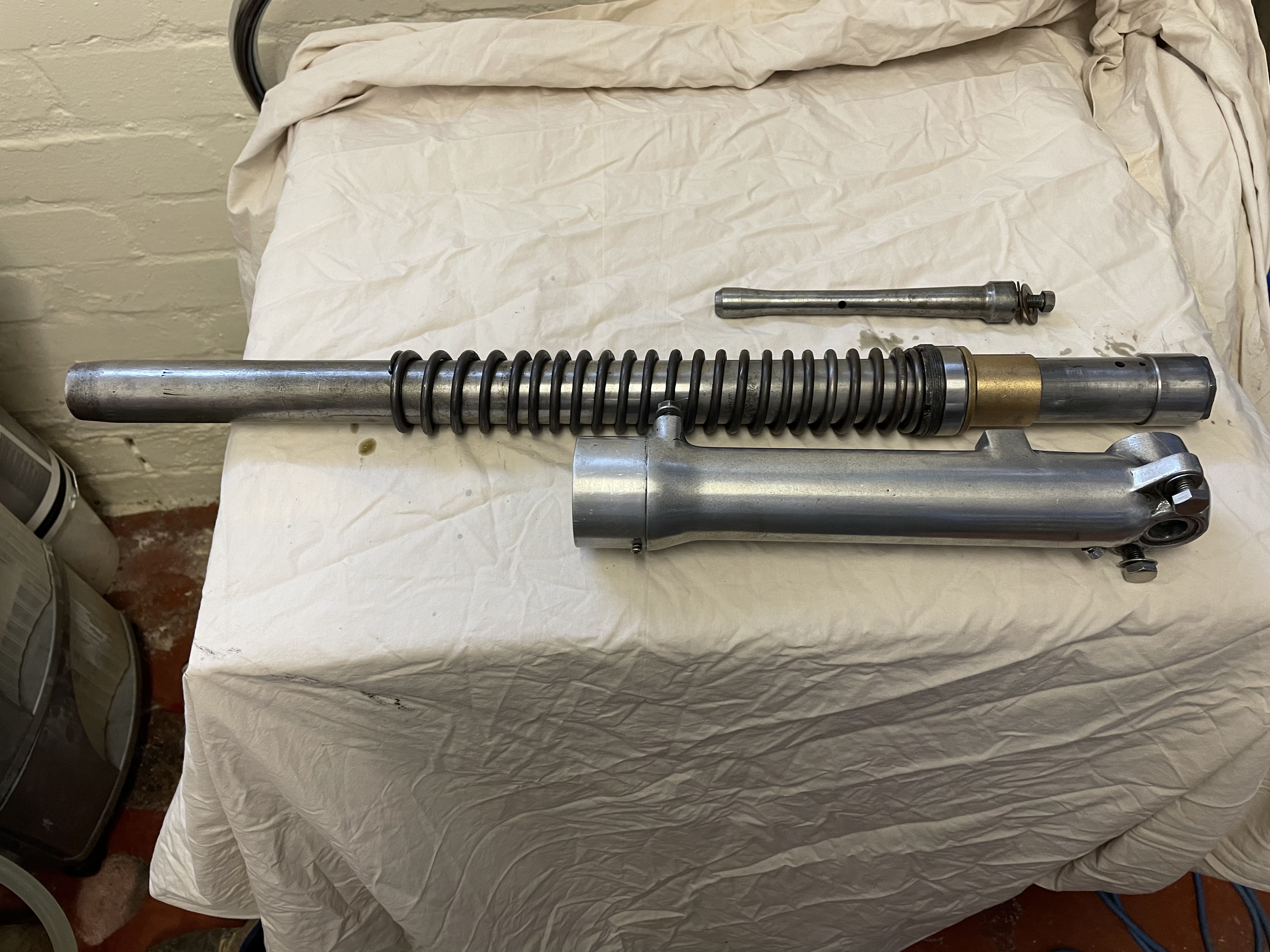
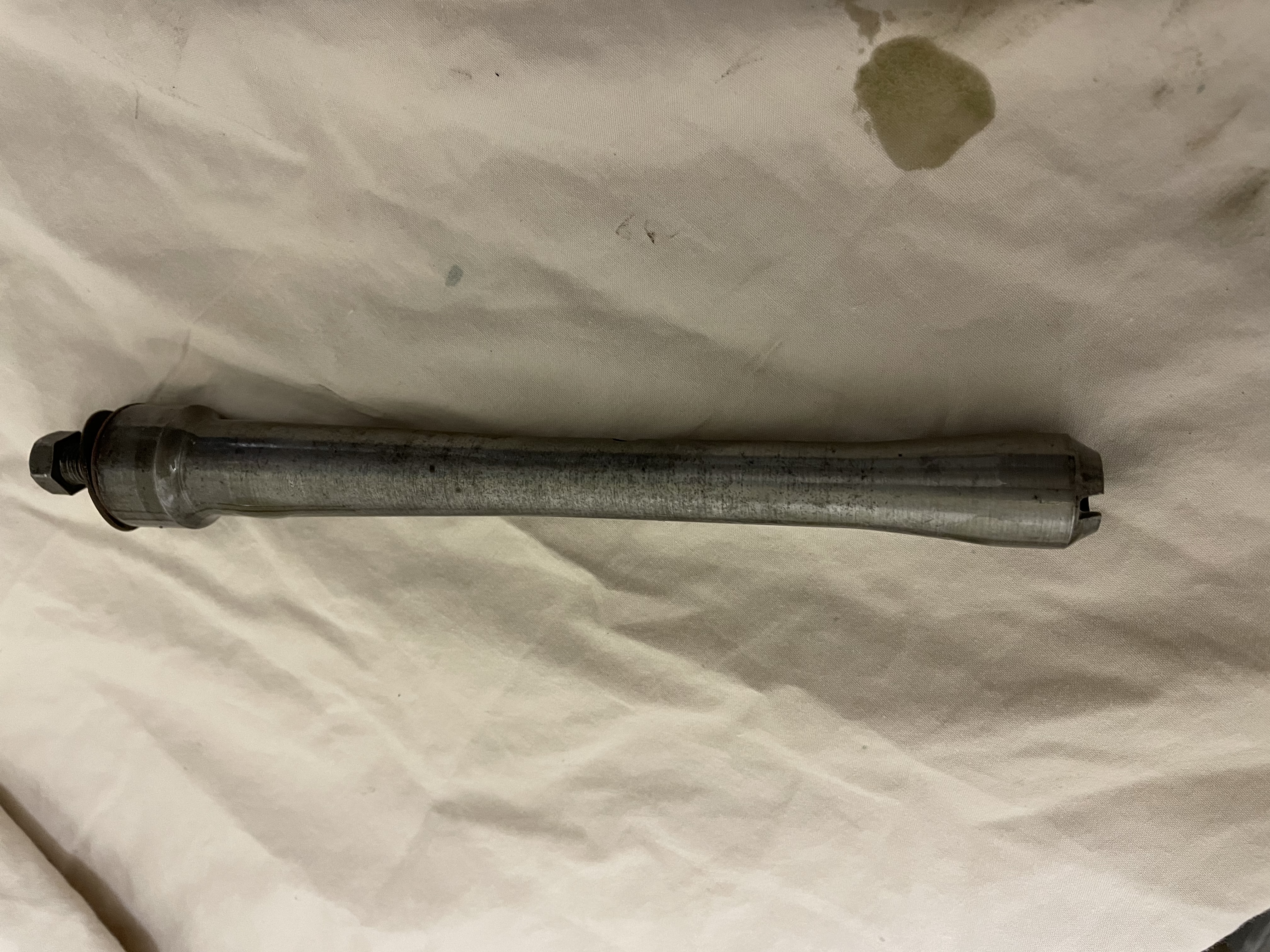
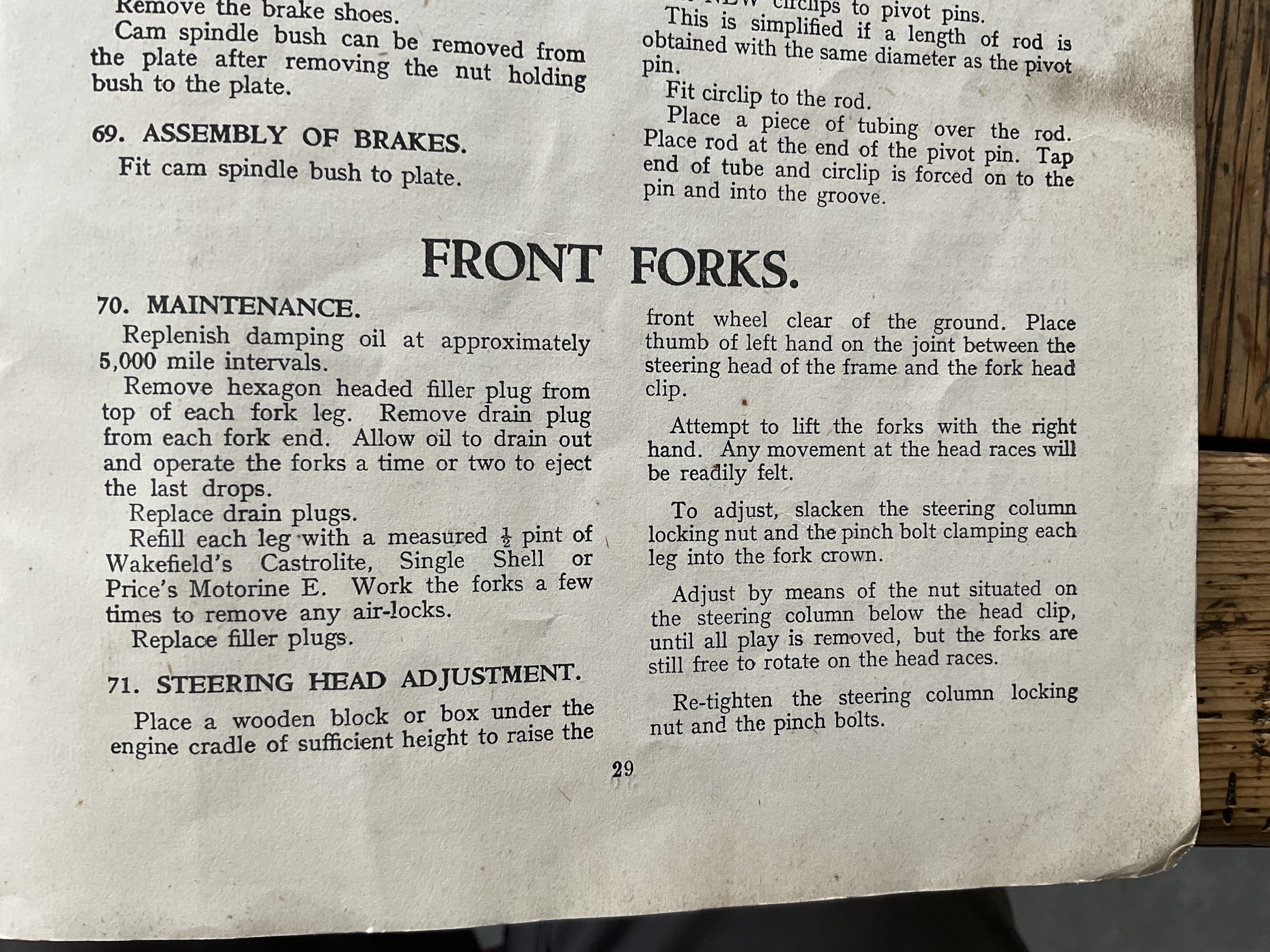
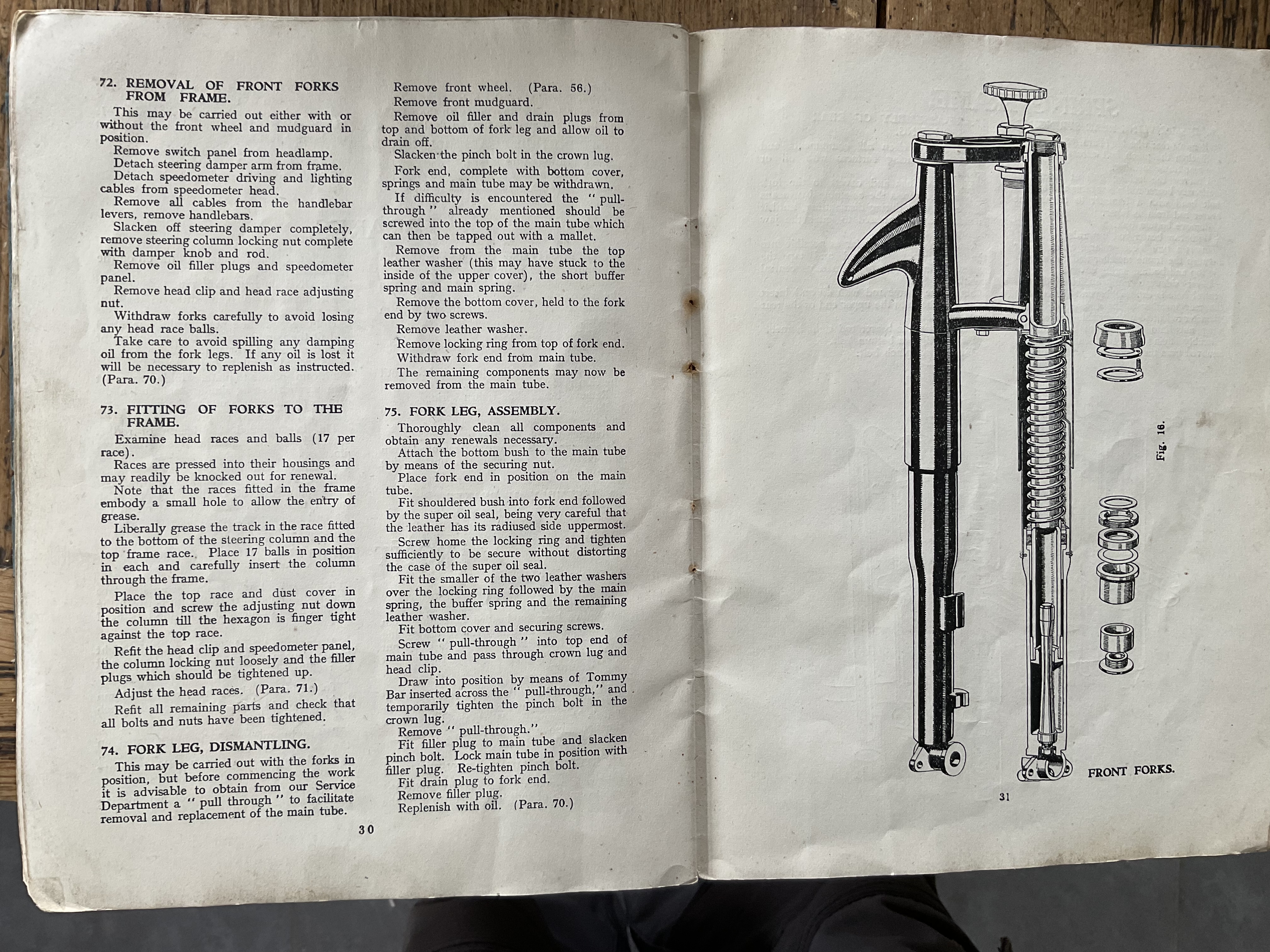



Welcome to the club Michael, you will certainly not be short of friendly advice. How useful it is might be debateable however!
Can you add a photo or 2 of the mystery slot, that will be helpful.